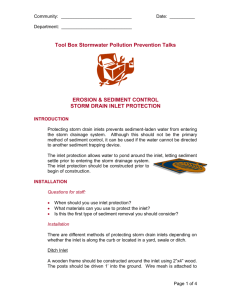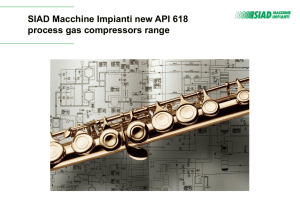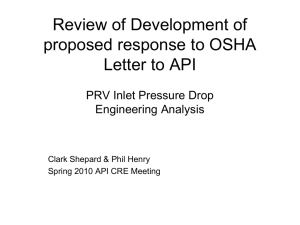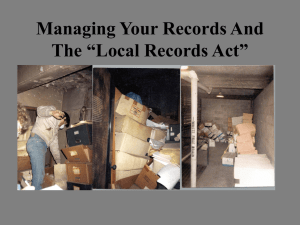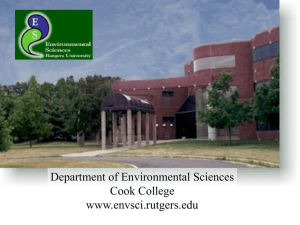Cook Inlet Modeling Working Group Freshwater Input
advertisement
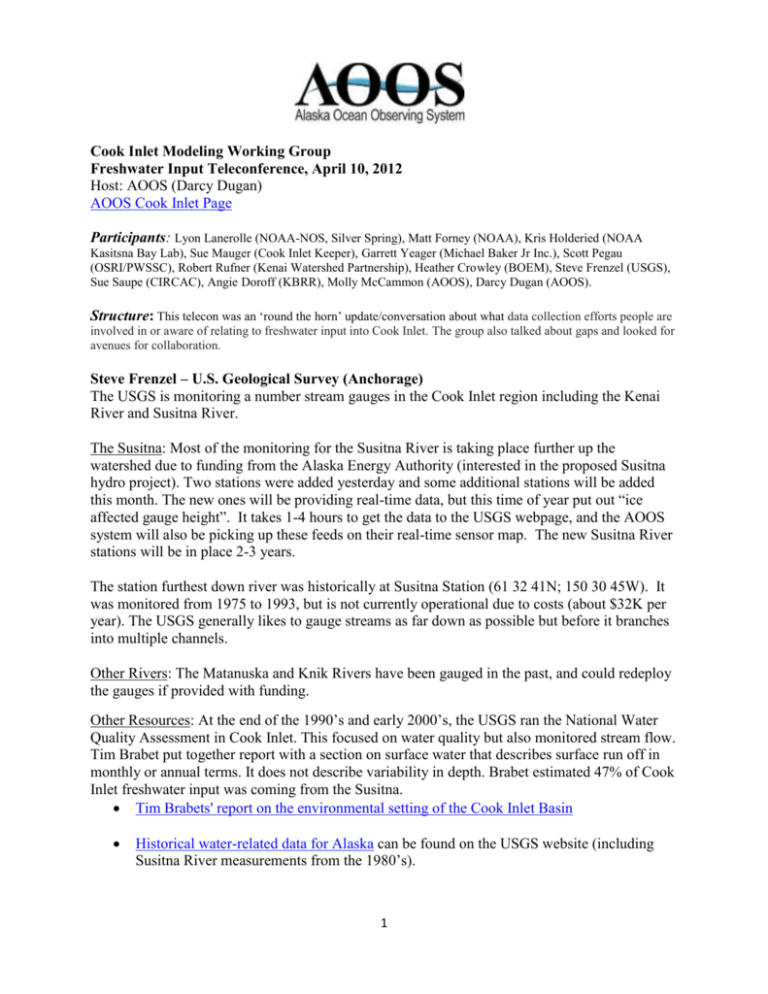
Cook Inlet Modeling Working Group Freshwater Input Teleconference, April 10, 2012 Host: AOOS (Darcy Dugan) AOOS Cook Inlet Page Participants: Lyon Lanerolle (NOAA-NOS, Silver Spring), Matt Forney (NOAA), Kris Holderied (NOAA Kasitsna Bay Lab), Sue Mauger (Cook Inlet Keeper), Garrett Yeager (Michael Baker Jr Inc.), Scott Pegau (OSRI/PWSSC), Robert Rufner (Kenai Watershed Partnership), Heather Crowley (BOEM), Steve Frenzel (USGS), Sue Saupe (CIRCAC), Angie Doroff (KBRR), Molly McCammon (AOOS), Darcy Dugan (AOOS). Structure: This telecon was an ‘round the horn’ update/conversation about what data collection efforts people are involved in or aware of relating to freshwater input into Cook Inlet. The group also talked about gaps and looked for avenues for collaboration. Steve Frenzel – U.S. Geological Survey (Anchorage) The USGS is monitoring a number stream gauges in the Cook Inlet region including the Kenai River and Susitna River. The Susitna: Most of the monitoring for the Susitna River is taking place further up the watershed due to funding from the Alaska Energy Authority (interested in the proposed Susitna hydro project). Two stations were added yesterday and some additional stations will be added this month. The new ones will be providing real-time data, but this time of year put out “ice affected gauge height”. It takes 1-4 hours to get the data to the USGS webpage, and the AOOS system will also be picking up these feeds on their real-time sensor map. The new Susitna River stations will be in place 2-3 years. The station furthest down river was historically at Susitna Station (61 32 41N; 150 30 45W). It was monitored from 1975 to 1993, but is not currently operational due to costs (about $32K per year). The USGS generally likes to gauge streams as far down as possible but before it branches into multiple channels. Other Rivers: The Matanuska and Knik Rivers have been gauged in the past, and could redeploy the gauges if provided with funding. Other Resources: At the end of the 1990’s and early 2000’s, the USGS ran the National Water Quality Assessment in Cook Inlet. This focused on water quality but also monitored stream flow. Tim Brabet put together report with a section on surface water that describes surface run off in monthly or annual terms. It does not describe variability in depth. Brabet estimated 47% of Cook Inlet freshwater input was coming from the Susitna. Tim Brabets' report on the environmental setting of the Cook Inlet Basin Historical water-related data for Alaska can be found on the USGS website (including Susitna River measurements from the 1980’s). 1 Overall river trends for Alaska can be hard to see, but if you break the data along the fluctuations in the PDO, it’s possible to see the trends more clearly. Steve noted there are several papers on that topic. Scott Pegau – Oil Spill Recovery Institute (OSRI)/Prince William Sound Science Center (PWSSC) - Cordova Scott’s work in the Inlet has focused on oceanographic measurements and how freshwater looks when it gets to lower inlet. He has analyzed input from different rivers through the Coastal Marine Institute (CMI) program. One of the valuable data sets is ADFG offshore test fishery which has salinity data. The early data was questionable in quality, and it’s possible to discern when they started using an electronic sensor (it got better!) This project involved crossing lower Cook Inlet every day in the month of July. There was an analysis of freshwater content in July compared with gauge data, which is available in the CMI report. An oceanographic data set collected by BOEM has lower resolution, but includes a lot of information on freshwater content over several years, including mooring data. OSRI is interested in validating hydrological models, and has been focusing on PWS because it doesn’t have gauged streams. They circulated an RFP to validate the model, but did not accept either of the submissions and are revising the RFP this week. They would like an observation program coupled with models, focused on precipitation from the sky (not glacial melt). This work in PWS is applicable to Cook Inlet as well. Sue Saupe, Cook Inlet Regional Citizens Advisory Council (CIRCAC) - Anchorage Suspended sediments are another good proxy for tracking freshwater, and are visible from satellite images. Sue Saupe has been looking at these in a qualitative way to understand Cook Inlet circulation. Sue has also been trying to increase the measurement of basic salinity in the inlet, and purchased a microcat sensor which she’d like to have deployed more often. At one point the oil and gas industry sent their welders out to deploy on platform leg to capture freshwater flow coming down western side of Cook Inlet. Being able to keep it out during a complete ice free season would help with modeling. Scott noted that freshwater into ocean is highly modified by tides -- what it looks like when it hits lower Cook Inlet is really based on tides. There is a big question about the time lag between river discharge. The microcat records a measurement every 10 minutes and the tide is moving up and down so you would need to pick a tidal point and use it from that point only. (Otherwise it would be recording surface water vs. deeper water depending on the tide). Project for Masters Student: compare the microcat salinity measurements during the July transects in the lower Inlet to determine time lag. This is a nicely defined project. If you know of students, contact Scott Pegau or Sue Saupe. 2 Contaminants: Sue has conducted significant contaminants work in Cook Inlet through the Alaska component of the EMAP program (EPA’s Environmental Monitoring & Assessment Program). This includes coastal estuaries from the Western Gulf to the Copper River Delta. Interesting hydrocarbon results were obtained from the western Gulf of Alaska which provided a better understanding of how natural background varies around the Gulf. CIRCAC has received funding to do EMAP-type work for Cook Inlet, and has set up several main targets. The background assessments for Cook Inlet that could nest within the national program. Within Cook Inlet will also be nested targeted sampling, including industry areas and mixing zones. This is a $500K project with multiple funding sources. In order to interpret any of the metals/hydrocarbon data, we need to understand what is entering Cook Inlet from the other water sources to see if it’s been anthropogenically affected. Most of it was done through sediment streambed testing. Some of the same rivers were also sampled as part of the NWQA program. They tried to capture some of the rivers twice a year; low flow and high flow and found that big differences in which metals dominated different watersheds. There is still a lot to learn in this area. CIRCAC has real interest in streams and the importance of stream discharge into Cook Inlet. They vary in suspended sediment, but contribute significant amounts of arsenic or chromium, depending on the ores they drain. Trying to figure out which ones are high in these minerals can help figure out what is natural background compared to anthropogenic contaminants. So far they have an incomplete story with only two points in time. Very little work has been done on contaminants in the water column. Robert Rufner - Kenai Watershed Partnership Robert has collected information on total and dissolved metals on the Kenai – peak discharge of hydrocarbons and metals, and their background sources. He is working to be able to tease out the effects on Kenai. CIRCAC has praised this study. The data may be hard to find but it is available through the Kenai Watershed.org website. Lyon Lanerolle – NOAA CO-OPS (Silver Spring) Lyon has been working on a ROMS circulation model for Cook Inlet and was asked how they are incorporating freshwater input. To date, Lyon’s model is a purely tidal run model. Soon they will be working on a hind cast where they will include river discharges, temperatures, and salinity from 19 rivers that have already been identified. They will be including the rivers in the ROMS model as point sources. Sue Mauger mentioned they’ve been looking at stream temperatures in 48 streams in the Cook Inlet region. Lyon and Mauger will collaborate to share the data. Sue Mauger – Cook Inlet Keeper, Water Quality Monitoring Program (Homer) The Keeper is finishing up a five year dataset looking at temperatures in Cook Inlet to get a baseline understanding of which streams are warm or cold, and vulnerable to climate change. The goal is to select certain sites to monitor for the longer term. Sue is interested to know long term data from any of these sites are needed by others. The Keeper is looking for input to set priorities for long term station locations. 2008-2010 report on the Cook Inlet Stream Temperature Monitoring Network More general background on the Cook Inlet Keeper monitoring project with a map of 48 sites: 3 Kris Holderied, NOAA Kasitsna Bay Lab (Homer) Kris and her field crew will be continuing to run routine CTD transects in the middle of Kachemak Bay – a continuation from last summer. These CTD’s have been done at least monthly for the past year except for six weeks when the harbor was iced in. Kris is looking at the variation during spring neap conditions, as well as the connection between Kachemak Bay and the Lower inlet, and the inlet and Gulf. They are also building additional datasets through EVOS Long Term Monitoring Project (in partnership with AOOS and many other agencies and academic institutions). NOAA’s Tides & Currents office is working with Lyon and Rich Patchen to install ADCP current meters in Cook Inlet. This is a collaboration with the Alaska Energy Authority who is interested in these sites to scope locations for future tidal energy potential. There will be an overlap in time between those deployments and drifter surveys done by the Kachemak Bay Research Researve and UAF this summer to help with NOAA’s ROMS modeling hind cast scenarios. Emailed update from Peter Olsson, Alaska Experimental Forecast Facility/UAA (Anchorage) We are currently running three mesoscale models (variants of WRF) run twice daily (48-h simulations) over much of the watershed of CI: two at 3-km ∆x and one at 4-km ∆x. We have at least a year of data from each model, and we are verifying against observations in the CI region. How do we do? On an event-by-event basis not so well. The models show much less spatial variation in liquid-equivalent precipitation than the obs. seem to show (note that really good "verifiable" obs. for precip are hard to come by). Nature just seems to produce an extremely fine-grained precip distribution that models don't. (I should mention that we are talking about 24-h totals here.) For example, snow from PANC to Merrill Field to Elmendorf to Eagle River to Eagle River Nature Center may vary by several 100% from max to min (and these sites vary little in elevation), yet the model might show 30-40% differences. There is a bunch we do not fundamentally understand about mesoscale precipitation distributions, and the model evidently does not know either... The more coarse (in time) view is quite a bit better. On a station-by-station basis things look a good deal better on monthly averages. This time-scale is probably more germane to the CIfreshwater input at any rate. Which model does best? That is real hard to say. All three models vary in details of microphysics parameterizations and grid-spacing. Often, one model will do quite a bit better than others on an episodic basis. However the "best" model varies from one episode to the next. one variant tends to be wetter than the others (often times too wet), but sometimes it is the best– or at least the "least too dry". We are trying to get a handle on the seasons as well For example, is one model best in the warm season and another in the cold season. We only have one full annual cycle to work with, so that question cannot be answered. adequately. Where does this leave us? A usual, with more questions than answers. It depends to a large extent of what "figure of merit" you are considering. Some spatial weighting probably needs to be used in this analysis, since observations tend to be clustered. Also, we have very few observations at higher elevations (say > 750 m), which is of course where much of the melt water originates… 4 What are some key questions with respect to hydrological or freshwater measurements? How well does modeled precipitation match with observed precipitation? Peter had written “not so well” People voiced that the work that Peter Olsson is doing was deemed very important. Many people are going to be relying on models. Interested in intersection between monthly averages and how its captured for a particular watershed. How valid are current hydrologic models? To understanding freshwater, where are key places for new gauges Collaboration Opportunities Cook Inlet Keeper is looking for input to set priorities for long term stream monitoring locations. If you have suggestions, please get in touch with Sue Mauger. Lyon Lanerolle with NOAA and Merlin Peterson with the USACE may benefit from a conversation about their respective circulation modeling projects. Darcy will help connect them. Lyon is interested in getting in touch with navigation managers and mariners to know their circulation modeling needs. Matt Forney can help get in touch with marine pilots. There was a question bout how Yi Chao’s ROMS model handles hydrology in Cook Inlet. This could be a good conversation between Lyon and Yi. It would be useful to have a small group discussion about priority locations for new stream gauges to help validate models and link precipitation to stream flow. Darcy will organize a conversation between Merlin, Lyon, Peter Olsson and other interested people. Matt Forney noted that the Port is interested in Port McKenzie shoal and whether it is growing or shrinking (a big concern for marine pilots). They are getting ready to conduct multi-beam surveys over the next five years to figure out its cycle. They will also be producing graphics and models based on old surveys and next 5 years. Lyon and Sue Mauger will talk about historic stream data collected by Cook Inlet Keeper that could be used by the NOAA ROMS model NPRB’s Gulf of Alaska program – is anyone working on freshwater input or analyzing historical data collections of satellite data? This could be a nice dataset. A listing of Cook Inlet models (circulation, wind, and wave models) can be found on the AOOS Cook Inlet page. If you have ideas for discussion topics for upcoming calls, please email Darcy at dugan@aoos.org. 5

